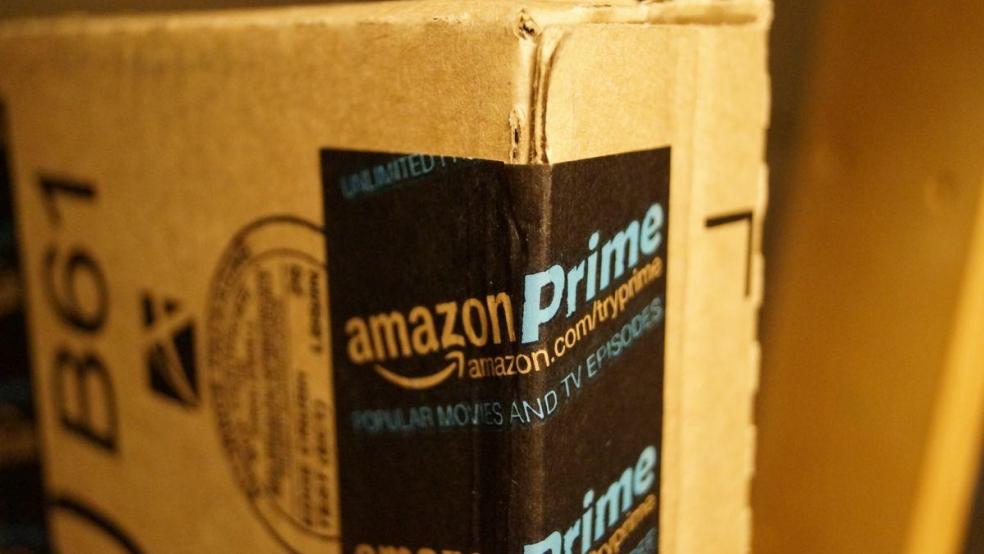It’s a good time for Amazon Prime.
Ten years after Jeff Bezos first announced a membership deal that would provide free shipping, Amazon Prime has grown to encompass much, much more — including, most importantly, a fast-growing video-streaming service. Last month, Amazon and its series Transparent beat out competitor Netflix and more traditional television offerings — even HBO’s — to win the Golden Globe for best musical/comedy series. Transparent star Jeffrey Tambor called Amazon his “new best friend” in accepting the award for best actor in a musical or comedy series.
As it turns out, Amazon is now the best friend of video streamers in general: Americans now watch on-demand videos from Amazon about as often as they do from Netflix.
Related: Should You Fear An All-Powerful Amazon.com?
In short, Amazon is quickly catching up with Netflix, according to a Consumer Intelligence Research Partners report published last week —a development that shows just how powerful Prime has become at attracting subscribers and fueling growth at the online retailer.
Prime, the company’s $99 subscription service, had 40 million U.S. members, as of Dec. 31, according to CIRP. Amazon grew its Prime membership by 53 percent in 2014 despite a $20 membership price increase.
“We view this data point very positively given the incremental top-line benefit of each new member, as well as the loyalty that the program encourages in customers, and remain impressed with such substantial growth as the program encourages in customers, and remain impressed with such substantial growth as the program is nearly 10 years old,” Nomura analysts wrote in a research note on Jan. 30.
But can Prime help the company turn a profit? Even with 40 million members paying $99 a year, the service remains "a big money loser," Fortune reported this month. But Prime keeps customers buying from Amazon, and the more services the company builds in, from faster free shipping to video streaming to music to e-books, the more customers get locked in to buying from Amazon instead of its competitors.
Related: Testing Amazon’s One-Hour Delivery
The growth of video streaming has only helped draw in new members. While Netflix and iTunes have pioneered streaming video with different models — monthly subscriptions for Netflix as opposed to pay-per-video for iTunes — Amazon has taken advantage of both models, making it more convenient for consumers.
Amazon Prime customers use the free streaming video that they receive with their membership somewhat less than Netflix members use their service, but Amazon Prime customers also buy or rent additional video. Based on data from CIRP, Netflix members view video on average 12.7 times a month. Meanwhile, Amazon Prime members use the free streaming video service 8.3 times per month. They also buy or rent from the Amazon Instant Video service 5.1 times a month, for a total of 13.4 times per month on average. Those numbers are based on a CIRP survey of 500 U.S. on-demand video users conducted between October and December 2014.
“Amazon started much later, and used its Prime membership to sell additional streaming video beyond what they provide through the free streaming service,” said Mike Levin, partner and co-founder of CIRP, in a press release.
Thanks to these features, Amazon Prime was able to add 10 million new subscribers in the fourth quarter of 2014 alone and Amazon Prime members now represent nearly 50 percent of all Amazon customers.
This is a strong competitive advantage for Amazon since Prime members tend to spend much more than non-members. CIRP estimates that Prime members spend on average about $1,500 a year, compared to about $625 per year for non-members.
This clearly helped boost fourth-quarter earnings (Amazon posted a profit for the quarter, rebounding from its biggest loss in 14 years the previous quarter). Amazon’s share price is up 20 percent on the year. However, it remains to be seen whether Prime, as a growth engine for Amazon, will be able to consistently drive long-term profits for the company, which posted a $241 million loss for the full year 2014.
Related: Amazon Needs to Wow Investors and Customers Again
Some experts are clearly skeptical, acknowledging the power of Prime but also its cost.
“On the one hand, Prime adds to their bottom line, but it’s like a leech that sucks their blood,” Forrester analyst Suchitra Mulpuru told Fortune earlier this year, estimating that Amazon loses at least $1 billion annually on Prime-related shipping expenses. “When they throw in things like lending library and streaming, it just gets more and more expensive for them.”
Amazon has sought to expand Prime well beyond its original offerings. In addition to video streaming and free delivery, Prime also offers unlimited music streaming, free unlimited photo storage as well as free e-books, as long as they’re read on an Amazon device. The company is looking to go even further:
There’s Amazon Fresh, the company’s online grocery delivery, which Prime members in eligible zip codes in the New York metro area can use for free, and the recently launched Prime Now app, which offers one-hour delivery in most Manhattan zip codes. And let’s not forget Amazon Prime Air, the company’s still-in-the-works delivery system using drones to bring consumers packages in 30 minutes or less.
Clearly, Amazon doesn’t see the sky as the limit for Prime.
Top Reads from The Fiscal Times:
- Report Claims Tax Law Changes Won’t Keep Companies in U.S.
- Video Games Could Be Coming to Vegas Casinos
- 5 Burning Questions Still Facing Twitter


